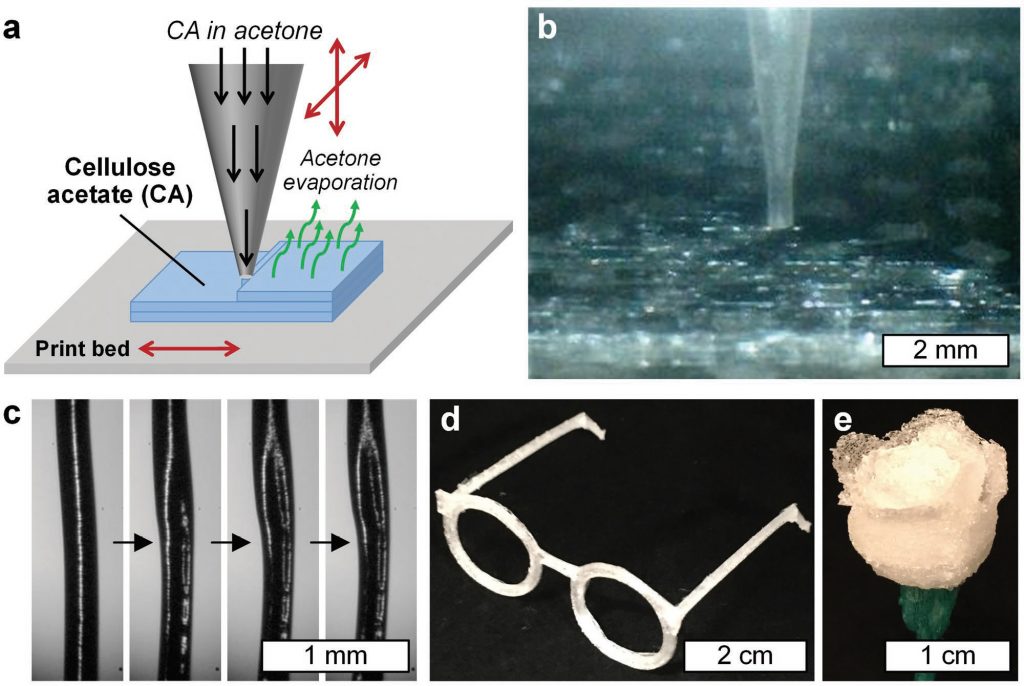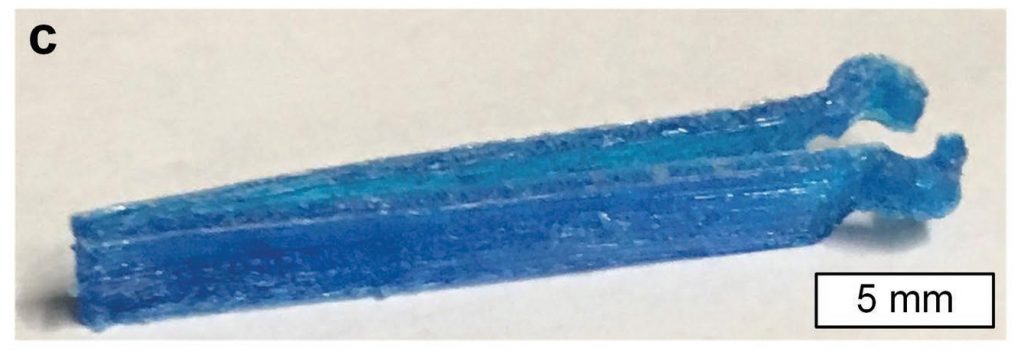Cellulose, the primary component in the structure of green plants, is lauded in materials science for it environmentally friendliness. It occurs naturally and is found in cotton fibers used to make clothes, paper, cardboard and coatings for medicines.
The material also has higher comparative strength to both PLA and ABS plastics.
As cellulose can’t be melted for 3D printing using heat, various methods have been developed to allow the biomaterial to act as a liquid. By using acetone, researchers at MIT in Massachusetts, not only liquefy cellulose, but they have also created a substance that can be modified with extra properties.
46% tougher than ABS, PLA and Nylon
To make the ink, cellulose acetate powder was dissolved in acetone. Acetone was chosen as the dissolving agent as it is inexpensive, evaporates quickly, and can be easily recycled for reuse. This ink was then extruded using a gantry-based Printrbot Simple Metal 3D printer.
A Printrbot Simple Metal 3D printer in action. Clip via Matthew Greenlaw on YouTube.
Once 3D printed, the acetone evaporates leaving a solid structure. To rid the cellulose of harmful acetone molecules, it is then treated in sodium hydroxide to reinforce the structure’s hydrogen bonds.
Miniature spectacles and a rose were 3D printed in the cellulose acetate ink to prove its abilities.

The results show that,
…the mean toughness of a converted cellulose part is 46% greater (4.4 ± 0.5 MJ m−3) than the printed CA part, significantly exceeding ABS and PLA, and some published values for Nylon…
“kills 95% of bacteria upon exposure to light”
In addition to strength of the material, the paper published in Advanced Materials Technologies, demonstrates how 3D printed cellulose can kill bacteria when exposed to UV light. By adding a dye of antimicrobial agents, the researchers “find a statistically significant 95% reduction in viable count of bacteria compared to the primary control sample” meaning that this method could be suitable for 3D printing medical instruments.

Plant material with a global impact
In addition to being renewable and biodegradable, cellulose is also one of the most abundant materials on the planet. Using it in place of other plastics could make many industrial applications much greener and sustainable.
Research at Chalmers University of Technology in Sweden has also developed a method for 3D printing with cellulose that instills electrical properties into the material. As 3D Printing Industry previously reported 3D bioprinting with bacteria is also the subject of further research into environmentally safe approaches.
Additive Manufacturing of Cellulosic Materials with Robust Mechanics and Antimicrobial Functionality is co-authored by Sebastian W. Pattinson and A. John Hart of The Mechanosynthesis Group at the Massachusetts Institute of Technology.
To stay up to date with the latest 3D printer materials research, sign up to the 3D Printing Industry newsletter, and follow our active social media channels.
Featured image shows green plants inside an Australian rainforest. Photo by Ben Britten, tauntingpanda on Flickr


